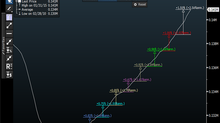Towards A New Understanding of Economic Data
The whole aim of practical politics is to keep the populace alarmed by an endless series of hobgoblins, most of them imaginary. - H.L. Mencken, 1926
That statement should certainly ring true in this election cycle, as a new "crisis" is shoved before our faces several times a day with alarming urgency. In fact, things have rarely been better- it's just that today, we're constantly informed of practically every single human misfortune within seconds of its occurrence. Unfortunately, this manufactured state of perpetual crisis has permeated economics as well. We are kept in a news cycle of interpreting most every economic statistic as a harbinger of impending economic ruin. And if it doesn't come true by next Tuesday, well, tomorrow brings another news cycle to obsess over.
For example, I have commented several times on the Labor Force Participation Rate. “Why, it hasn't been this low since 1974!!” scream the cable news hosts. That's true. But what is left unsaid is that 1974 was a high water mark itself. Because the level it reached that year was STILL higher than at any point reached throughout the 1950s, a time where China was a closed society, India was a backwater, Europe was still rebuilding its manufacturing base, and the United States accounted for nearly half of all global output. In fact, the LFPR represents little more than a demographic bubble. So, can we really call the LFPR “low” at this point in history? Maybe not. Maybe not at all. But it is remarkable to this observer how many seasoned economists are reading this statistic as if it were a bowling score. There's a history behind this they completely ignore.
But what is most galling is the fact that the genesis of the obsession with LFPR was driven strictly by the cable news networks, not professional economists. Faced with nothing but positive outcomes as the economy emerged from its downfall, they had to find something to gin up, so this once obscure measurement was propelled to a level of scrutiny it never deserved. And that distorts perceptions about the state of the labor market.

*
Another source of apocalyptic hand wringing in the financial press of late is the slowing rate of worker productivity. I find this complaint hard to comprehend. Worker productivity is defined thus:
“labor productivity measures the amount of goods and services that a worker produces per hour.”
(This is not to be confused with employee productivity, which is an individual measurement.) From someone whose workday began with a stack of large legal pads on his desk with No. 2 pencils to today, where I barely have to write anything, and a factoid or an obscure piece of data can be looked up in less than a half second, you have to wonder what the econs are thinking when it comes to output, because the next obvious step is simply imagining finished products into existence. What the econs are missing are real world experience, since few have ever visited a factory floor. If a robot can weld the seams on a car's chassis in a two second spark, where a human welder once took five minutes to do the same task, how do you measure “worker productivity” when the human element of production is completely stripped from the process altogether? In fact, output is so high on so many levels thanks to the maximization of throughput throughout the supply chain, the classic meaning of “labor productivity” has ceased to exist.
Yet, this metric is being talked up as if it were an intolerable crisis, worse than a cholera epidemic. Our problem isn't productivity. It's glut.
*
Interest rates are perhaps the most contentious measurement discussed today- ad nauseum. As I remarked in a piece over a year ago, never before in the annals of human history have so many, wasted so much time, and so much thought, and so much media exposure, on so few basis points. Time was when a quarter point move, up or down, in the Fed Funds rate didn't stop the financial world from rotating on its axis. Now, every utterance from every Fed governor and every release of the Open Market Committee minutes is studied with Talmudic intensity. We are told that the Fed must “normalize” rates, as if somehow they were abnormal. Perhaps ONE out of a hundred commentators will have the presence of mind to note that “rates” (sic) are lower than they were once the Fed stopped adding to their bond and mortgage holdings. A LOT lower.

(QE ended on October 29, 2014.)
And that is a function of the market, not the Fed. But a legion of bellyachers has sprung up, blaming the Fed for “hurting savers,” even though excessive leverage was our biggest problem, “hurting retirees,” as if a Fed funds rate of 1.00% would suddenly allow Wal-Mart greeters to vacation in Gstaad, and the latest slander, pension shortfalls, as if pension funds actually invested in things like bank CDs and money market instruments.
So, are interest rates “too low?” Not at all- they are mirroring the reality of the economy as they should. Frankly, speaking only for myself, I just don't know how much more of this price stability I can take.
*
Lastly, there is a lot of talk about Gross Domestic Product. It seems we can't keep up with historical norms. For the sake of brevity, I won't go into why I think this is happening, but I DID notice something odd for the past several years, which I haven't voiced before: despite racking up a string of solid employment gains, GDP growth remained lukewarm. Employment has decorrelated itself from output. This was somewhat befuddling.

In the chart above, you'll note the decline in GDP (blue) drops along with an sharp increase in unemployment (red) during the 2008 crisis. Yet, for the past few years, while unemployment continues to decline, and the labor market gets tighter by the month, GDP has lagged since the middle of 2014. That doesn't make any sense on the surface. (Hint: see above on productivity.)
*
In any case, people still insist on interpreting current data as if they meant the same thing today as they did in 1962. They don't. And what is most disturbing to this observer, that even at this late date, many people, including professional economists, still don't grasp the full meaning of the financial crisis, and the new course we're on. This isn't the business cycle talking, folks. It's a whole different language.
Better learn how to understand it.
Postscript: by chance, a critique of a Washington Post piece written by economist Robert Samuelson, by the Center for Economic and Policy Research, noted the following complaint: " Samuelson also tells readers that, "despite the recovery, homebuilding in 2016 remains 36 percent below its 2006 level."
To which CEPR notes:
"Of course the 2006 level was inflated by an enormous housing bubble. We should not expect homebuilding to get back to its bubble levels unless we again saw a housing bubble."
Precisely.
-DD 8/29/16













